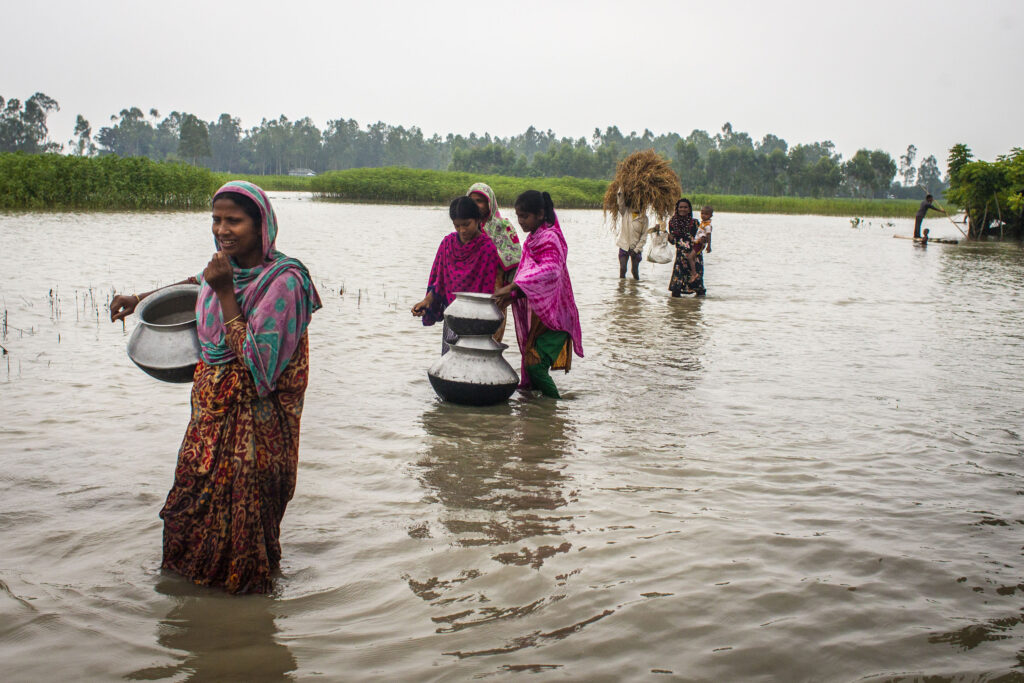The Impact of Disasters on Agriculture: A $3.8 Trillion Global Loss

In a sobering report released today by the Food and Agriculture Organization of the United Nations (FAO), it has been revealed that over the past three decades, the world has lost an estimated $3.8 trillion in crops and livestock production due to disaster events. These losses amount to an average of $123 billion per year, equivalent to 5 percent of the annual global agricultural gross domestic product (GDP).
Titled “The Impact of Disasters on Agriculture and Food Security,” this flagship FAO report presents the first-ever global estimation of the impact of disasters on agricultural production, with a specific focus on crops and livestock. Additionally, the report acknowledges that the actual losses could be even higher if systematic data on losses in the fisheries and aquaculture and forestry subsectors were available. This sobering analysis underlines the critical need to enhance data and information on the impact of disasters on all aspects of agriculture to build effective strategies for disaster risk management.
Agriculture, as the report emphasizes, is a sector profoundly dependent on natural resources and climate conditions, making it highly exposed and vulnerable to disaster risk. Recurrent disasters, the report cautions, have the potential to erode food security gains and undermine the sustainability of agrifood systems.
FAO Director-General QU Dongyu stated, “Leveraging FAO’s technical expertise, this publication showcases opportunities to proactively address risks in agrifood systems while demonstrating ways to mainstream disaster risk management into agricultural practices and policies.”
The report exposes a disturbing trend in which lower and lower-middle-income countries experienced the highest relative losses, amounting to up to 15 percent of their total agricultural GDP. Small Island Developing States (SIDS) also suffered significant losses, losing nearly 7 percent of their agricultural GDP.
When it comes to specific product groups, losses were substantial across the board. Cereals, with average losses of 69 million tonnes per year, bore the brunt of these losses. For perspective, this amount corresponds to the entire cereal production of France in 2021. Fruits and vegetables, as well as sugar crops, each faced average losses approaching 40 million tonnes per year. Meats, dairy products, and eggs also suffered an estimated annual loss of 16 million tonnes, corresponding to the entire production of these goods in countries like Mexico and India in 2021.
Geographically, Asia experienced the largest share of total economic losses, followed by Africa, Europe, and the Americas. However, in terms of agricultural added value, losses in Asia accounted for only 4 percent, while in Africa, they constituted nearly 8 percent. These disparities were even more pronounced when analyzed across subregions. Low-income countries, particularly SIDS, bore the highest incidence of losses in agricultural added value.
Disaster events have been on the rise, increasing from 100 per year in the 1970s to approximately 400 events per year worldwide over the past two decades. These events are not only becoming more frequent but also more intense and complex, with their impact expected to worsen. Climate-induced disasters exacerbate existing social and ecological vulnerabilities, leading to cascading impacts across multiple systems and sectors. Key drivers of disaster risk include climate change, poverty, inequality, population growth, health emergencies like pandemics, unsustainable land use, armed conflicts, and environmental degradation.
In extreme cases, disasters can displace rural populations, causing outward migration and exacerbating food insecurity. The report highlights the massive flooding in Pakistan’s southern province of Sindh as a case study of how a combination of slow and sudden onset hazards can lead to displacement, negatively impacting agrifood systems.
The report underscores the vulnerability of smallholder farmers, particularly those relying on rain-fed agriculture, who are disproportionately affected by disasters. Supporting the adoption of farm-level disaster risk reduction practices can help small-scale farmers avoid losses and enhance their resilience. Investments in these practices can perform on average 2.2 times better than previously applied methods.
Proactive and timely interventions, based on forecasted hazards, are crucial to building resilience by preventing and reducing risks in agriculture. For instance, anticipatory actions demonstrated favorable benefit-to-cost ratios in several countries, showing that for every $1 invested in such actions, rural families can gain up to $7 in benefits and avoid agricultural losses.
The report outlines three key priorities for action:
- improving data and information on the impacts of disasters across all subsectors of agriculture,
- developing and mainstreaming multi-sectoral and multi-hazard disaster risk reduction approaches,
- enhancing investments in resilience to reduce disaster risk in agriculture while improving agricultural production and livelihoods.
These priorities are essential for safeguarding global food security and ensuring the long-term sustainability of agrifood systems in the face of an increasingly volatile world.


Responses